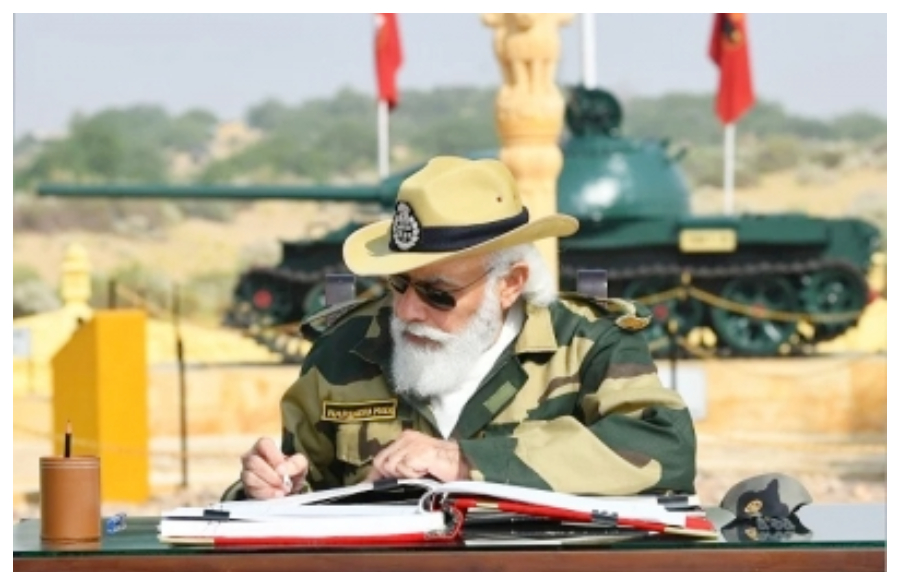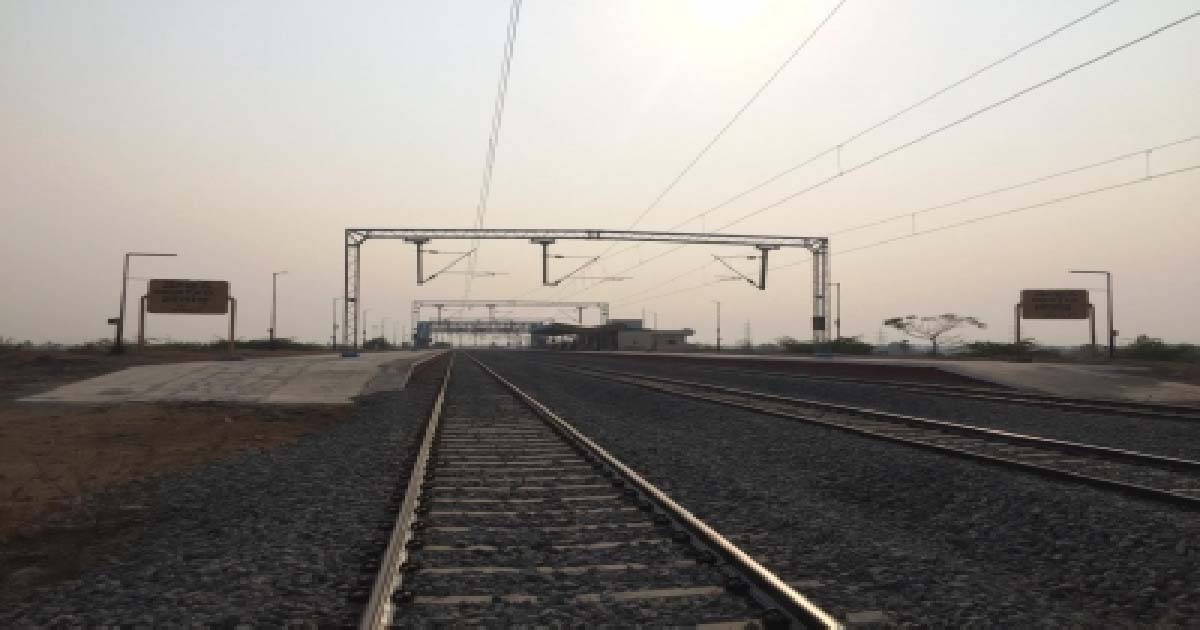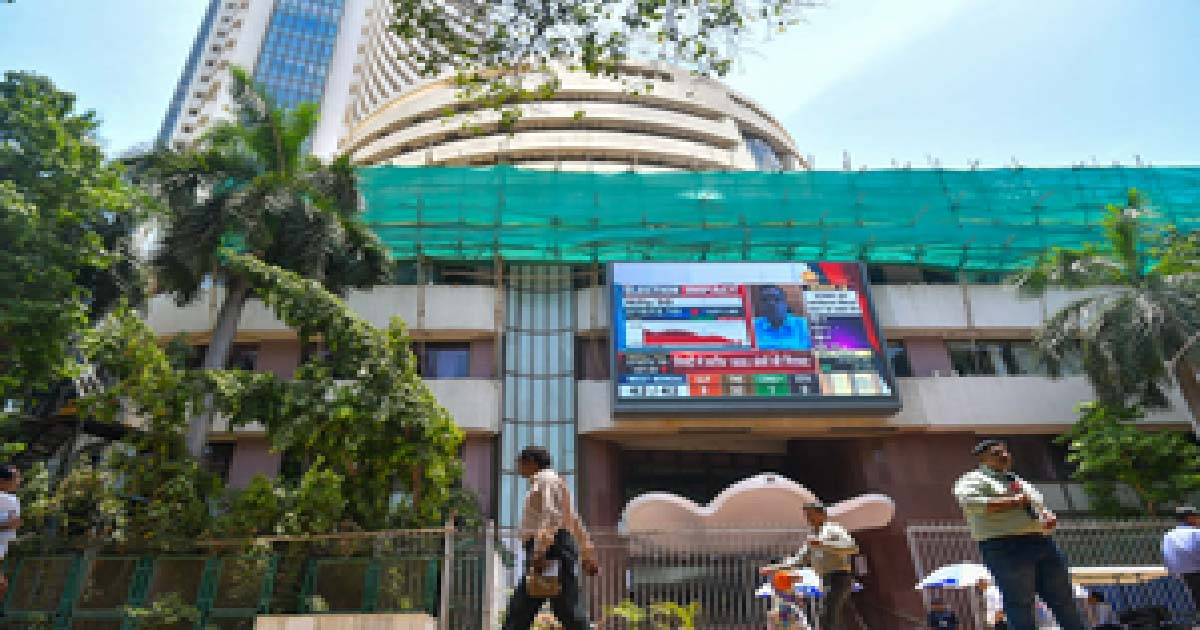Business
Astra missile order a big step in India’s Atmanirbhar Bharat drive

The Defence Ministry’s announcement of signing a contract with Bharat Dynamics Limited (BDL) for supply of ASTRA MK-I Beyond Visual Range (BVR) Air to Air Missile (AAM) and associated equipment for the Indian Air Force (IAF) and the Indian Navy at a cost of Rs 2,971 crore is yet another major move towards manufacturing and maintenance of defence equipment to achieve the vision of ‘Make in India, Make for the World’.
ASTRA MK-I BVR AAM has been indigenously designed and developed by Defence Research and Development Organisation (DRDO) based on the staff requirements issued by the IAF catering for Beyond Visual Range as well as Close Combat Engagement reducing the dependency on foreign sources.
Until now, the technology to manufacture missiles of this class indigenously was not available.
Air-to-air missile with BVR capability provides large standoff ranges to fighter aircraft which can neutralise the adversary aircraft without exposing itself to enemy’s air defence measures, thereby gaining and sustaining superiority of the air space. This missile is technologically and economically superior to many such imported missile systems.
ASTRA MK-I missile and all associated systems for its launch, ground handling and testing has been developed by DRDO in coordination with the IAF. The missile, for which successful trials have already been undertaken by the IAF, is fully integrated on the Su 30 MK-I fighter aircraft and will be integrated with other fighter aircraft in a phased manner, including the Light Combat Aircraft (Tejas). The Indian Navy will integrate the missile on the MiG 29K fighter aircraft as well.
The project, which will act as a catalyst for development of infrastructure and testing facilities, essentially embodies the spirit of ‘Aatmanirbhar Bharat’ and will help facilitate realising the country’s journey towards self-reliance in this sector. It will also create opportunities for several MSMEs in aerospace technology for a period of at least 25 years.
In continuous pursuit to achieve self-reliance in defence manufacturing and minimise imports under ‘Aatmanirbhar Bharat’, the ministry’s Department of Defence Production (DDP) has already intensified the drive for indigenisation of defence items by its DPSUs. The progress is being reviewed on a weekly basis by Defence Secretary Ajay Kumar.
A comprehensive user-friendly dashboard on its SRIJAN Portal has also been developed to monitor the status of progress of indigenisation. This dashboard enables real-time end-to-end updates of various activities being taken up by the respective DPSUs during the process of indigenisation. It provides transparent information, analytics and various customised reports to assess the performance of the DPSUs.
Relevant information like details of items to be indigenised, tentative order quantity, concerned DPSU, route of indigenisation to be adopted, details of in-charge Nodal Officer, details of expression of Interests, Requests for Proposal, project sanction order, etc. have been kept in public domain to make it accessible to the industry.
The ministry believes that the move can become a game changer in intensifying the indigenisation process.
While addressing the three-day 39th Commanders’ Conference of the Indian Coast Guard (ICG) in New Delhi on Monday, Defence Minister Rajnath Singh had highlighted his ministry sanctioning a large number of projects, including acquisition of Pollution Control Vessels and mid-term Life Upgradation of Dornier Fleet, to modernise the ICG.
Flight test of indigenously developed helicopter launched anti-tank guided Missile ‘Helina’ being carried out from Advanced Light Helicopter at high-altitude ranges
“Today, the manufacturing and servicing/repairing of ships and aircraft of ICG is being done indigenously. The ICG is spending almost 90% of its capital budget on the development of indigenous assets,” Singh had said while appreciating the ICG’s efforts towards achieving ‘Aatmanirbhar Bharat’.
On May 27, the Defence Minister undertook a sea sortie on stealth submarine ‘INS Khanderi’ and witnessed a wide range of operational drills at Karwar strengthening the resolve of achieving ‘Aatmanirbhar Bharat’ as envisioned by Prime Minister Narendra Modi.
Singh had described ‘INS Khanderi’ as a shining example of the ‘Make in India’ capabilities of the country and appreciated the fact that 39 of the 41 ships/submarines ordered by the Indian Navy are being built in Indian shipyards.
Business
38 Railways projects worth Rs 89,780 crore sanctioned in Maharashtra: Centre

New Delhi, Dec 20: A total of 38 railway projects (11 new lines, 2 gauge conversion and 25 doubling) of a total length of 5,098 kms and costing Rs 89,780 crore have been sanctioned in Maharashtra (as on April 1, 2025), the government said on Saturday.
During the last three fiscals — 2022-23, 2023-24, 2024-25 and the current financial year 2025-26 — 98 surveys (29 New Line, 2 Gauge Conversion and 67 Doubling) of total length 8,603 km falling fully/partly in the state of Maharashtra, have been sanctioned, it said.
“Further, construction works on the flagship High-Speed Bullet Train project have gathered momentum in Maharashtra. Now 100 per cent of land acquisition has been completed. Works on bridges, aqueducts, etc. have been taken up,” the Railways Ministry said in a statement.
In addition, platform extension work at 34 stations to accommodate 15-car EMUs has been taken up.
To improve the capacity of the rail network in the Mumbai suburban area, the Mumbai Urban Transport Project (MUTP)-II costing Rs 8,087 crore, MUTP-III costing Rs 10,947 crore, and MUTP-IIIA costing Rs 33,690 crore have been sanctioned.
To enhance passenger carrying capacity, 238 rakes of 12 cars each with doors have been sanctioned under MUTP-III and IIIA at a cost of Rs 19,293 crore. The process for the procurement of these rakes has been taken up.
With Western DFC also passing through Maharashtra, as about 178 route km of it or about 12 per cent of the overall route length, falling in the state, the ministry said that “about 76 km of this project from New Gholvad to New Vaitarna in Maharashtra has already been commissioned. Balance works have been taken up. Connectivity of WDFC to JNPT will boost the capacity to handle cargo and container traffic from the port to Delhi NCR”.
Presently, about 120 originating Mail/Express trains and about 3,200 suburban trains are handled daily in the Mumbai area.
Business
Indian indices end week in bullish tone over positive global cues

Mumbai, Dec 20: Indian equity benchmarks closed on a strong note this week, snapping a four-day losing streak amid positive global cues stemming from US inflation data.
The market ended the week in a bullish tone with Nifty surging 0.18 per cent during the week and 0.58 per cent on the last trading day to 25,966, after a softer US CPI print boosted expectations of a milder Fed stance.
At close, the Sensex was up 447.55 points or 0.53 per cent at 84,929.
Indian equities were traded in a cautious tone for most of the week, weighed down by persistent FII outflows, rupee depreciation, and heightened global uncertainties.
Further, early sessions also saw pressure from rising Japanese bond yields and expectations of Bank of Japan (BoJ) tightening, which amplified risk-off sentiment across emerging markets.
Bargain hunting and lower crude prices helped large caps drive a late rebound, trimming most of the week’s losses, market watchers said.
Broader indices also rose marginally during the week, with the Nifty Midcap100 up 0.04 per cent, while Nifty Smallcap100 was unchanged during the week. It gained 1.34 per cent at the close.
On the sectoral front, all sectors traded with a positive bias. Major contributions came from Nifty Realty, Auto, Healthcare, and Chemicals, while other sectors also posted modest gains.
Nifty has 26,200-26,300 as stiff resistance levels while 25,700–25,800 levels will act as support zone, they added.
Analysts said markets will likely maintain a cautiously positive bias in near future but remain highly sensitive to global cues.
Key drivers going forward include comments from the global central banks for the 2026 policy trajectory. While sentiment remains constructive, near-term volatility may persist amid uncertainty over trade deal timelines and the Indian rupee stability, they added.
Business
Nifty to touch 29,094 in 12 months supported by durable earnings, strong macro backdrop

New Delhi, Dec 19: India’s benchmark index Nifty is expected to touch 29,094 in one year based on long‑term valuation averages and earnings durability, a report said on Friday.
Wealth management firm PL Wealth said in the report that India enters the end of 2025 from a position of relative macro strength with record‑low inflation, a dovish monetary stance, resilient domestic demand and improved corporate earnings visibility.
“In the near term, large-cap stocks remain preferred due to their earnings stability and strong balance sheets, while selective exposure to high-quality mid-cap names is being added as visibility improves,” the wealth management firm cited its strategy.
Over the next 6 to 24 months, the earnings cycle is expected to broaden across consumption, financials, capex-linked sectors and select industrials, supported by benign inflation, lower interest rates and sustained domestic liquidity.
“India’s current macro configuration is among the most constructive we have seen in over a decade,” said Inderbir Singh Jolly, CEO, PL Wealth Management.
While global uncertainties will continue to create short-term volatility, India’s structural strengths—policy reform, financialisaton of savings and improving corporate balance sheets—position it well for sustained long-term growth, Inderbir added.
RBI’s 25 basis‑point cut to a 5.25 per cent policy repo rate lowered its CPI inflation projections and upgraded GDP growth estimates, signalling confidence in the sustainability of domestic demand, the report said.
The firm also noted FY26 GDP growth projection of 7.3 per cent underpinned by robust infrastructure spending, resilient consumption and key policy measures such as GST rationalisation and income-tax cuts.
The FY26 September quarter earnings season delivered broad-based strength, with several sectors—including hospitals, capital goods, cement, electronics manufacturing services, ports, NBFCs and telecom—reporting double-digit growth in EBITDA and profits.
The firm noted that Nifty earnings per share estimates for FY26–FY28 imply an earnings CAGR of nearly 14 per cent. Domestic institutional investors have anchored markets with record net inflows of over Rs 6.8 trillion year‑to‑date.
-

 Crime3 years ago
Crime3 years agoClass 10 student jumps to death in Jaipur
-

 Maharashtra1 year ago
Maharashtra1 year agoMumbai Local Train Update: Central Railway’s New Timetable Comes Into Effect; Check Full List Of Revised Timings & Stations
-

 Maharashtra1 year ago
Maharashtra1 year agoMumbai To Go Toll-Free Tonight! Maharashtra Govt Announces Complete Toll Waiver For Light Motor Vehicles At All 5 Entry Points Of City
-

 Maharashtra1 year ago
Maharashtra1 year agoFalse photo of Imtiaz Jaleel’s rally, exposing the fooling conspiracy
-

 National News1 year ago
National News1 year agoMinistry of Railways rolls out Special Drive 4.0 with focus on digitisation, cleanliness, inclusiveness and grievance redressal
-

 Maharashtra1 year ago
Maharashtra1 year agoMaharashtra Elections 2024: Mumbai Metro & BEST Services Extended Till Midnight On Voting Day
-

 National News1 year ago
National News1 year agoJ&K: 4 Jawans Killed, 28 Injured After Bus Carrying BSF Personnel For Poll Duty Falls Into Gorge In Budgam; Terrifying Visuals Surface
-

 Crime1 year ago
Crime1 year agoBaba Siddique Murder: Mumbai Police Unable To Get Lawrence Bishnoi Custody Due To Home Ministry Order, Says Report












